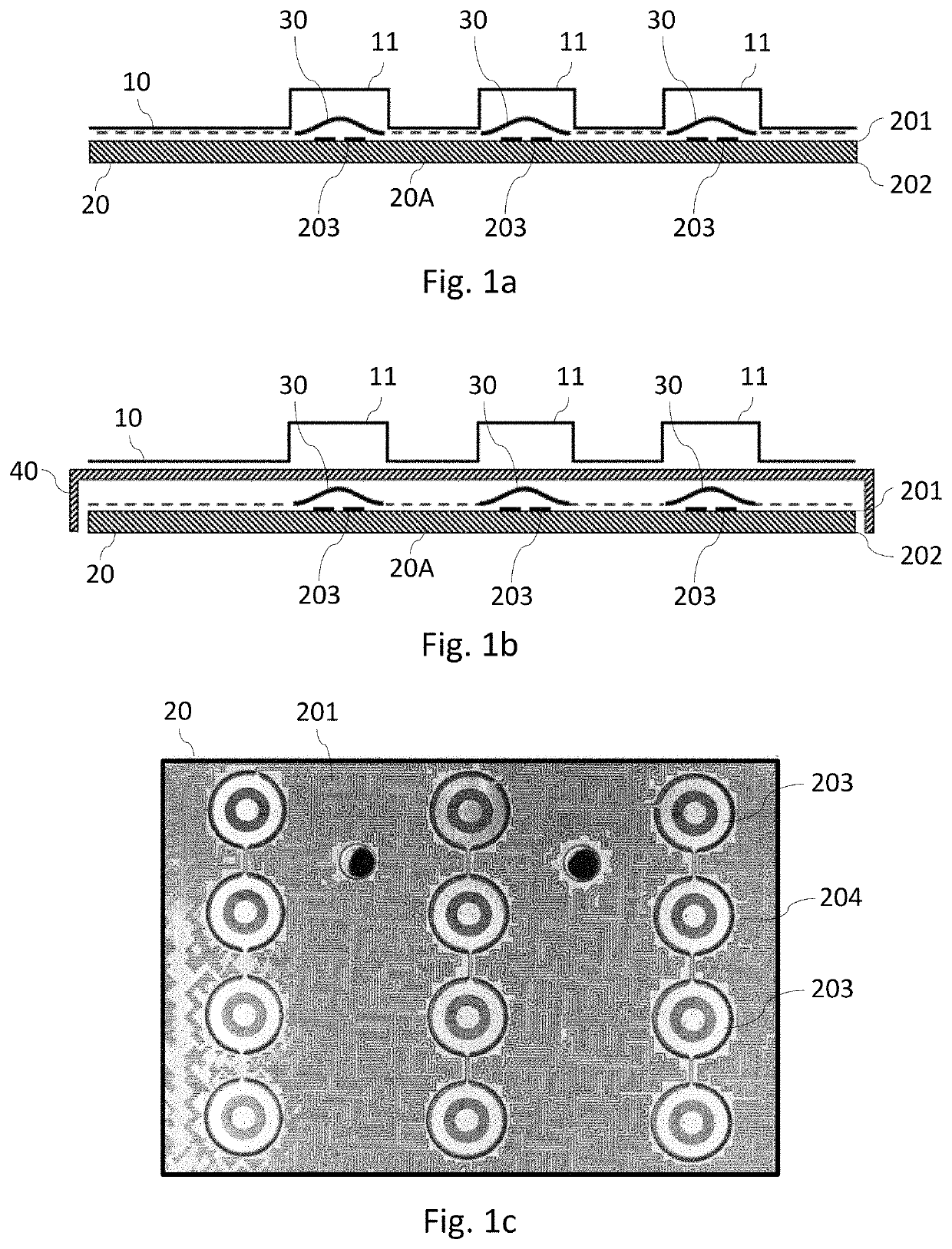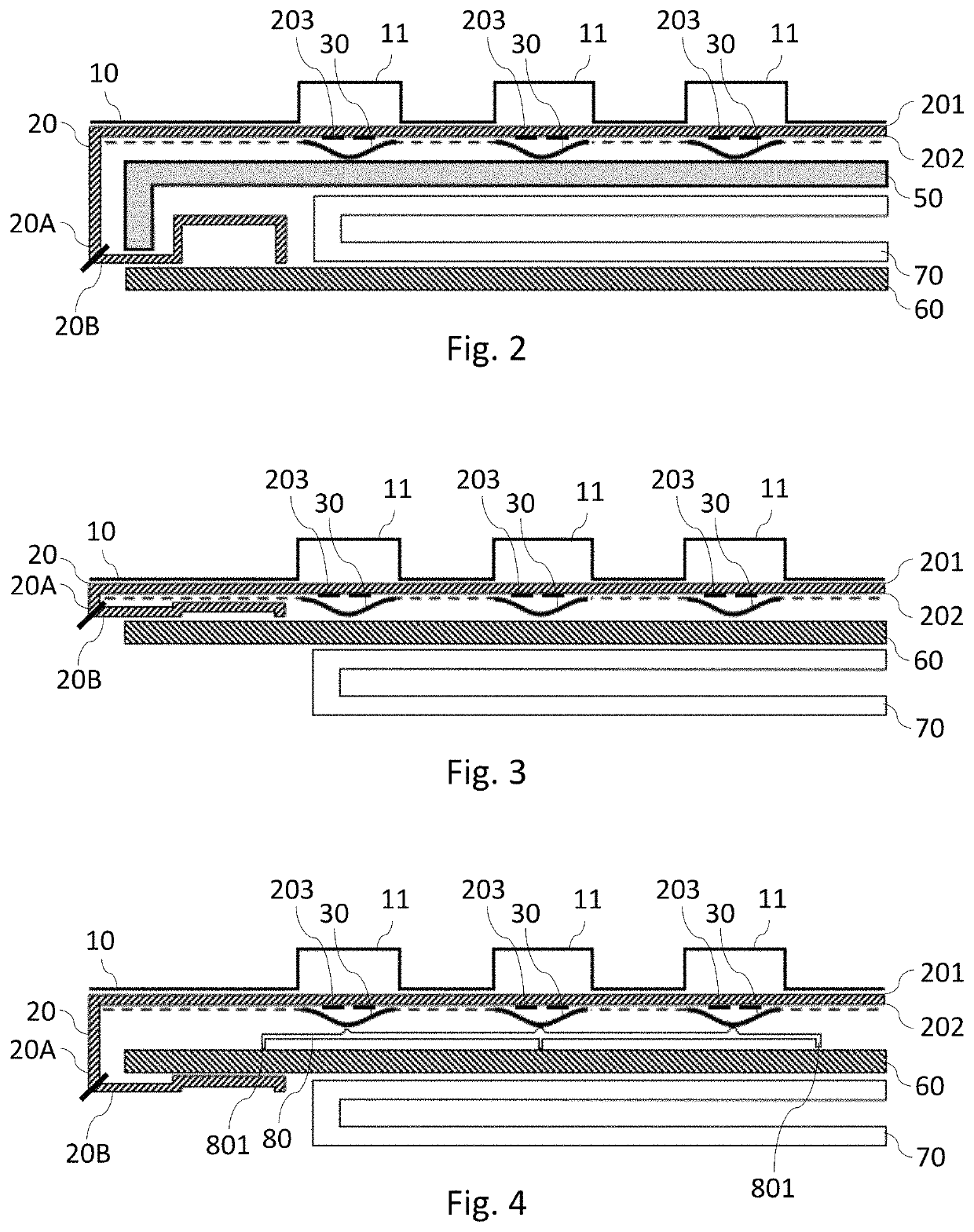Secured keypad for an electronic data-entry device
a keypad and data entry technology, applied in emergency protective devices, instruments, computing, etc., can solve the problems of not being secured, more difficult to obtain, and relatively easy for malicious individuals to access
- Summary
- Abstract
- Description
- Claims
- Application Information
AI Technical Summary
Benefits of technology
Problems solved by technology
Method used
Image
Examples
Embodiment Construction
[0039]General Principle
[0040]The general principle of a keypad according to the proposed technique is presented with reference to FIG. 2. It must be noted however that this general principle could equally well be presented with reference to FIG. 3 or 4. FIGS. 2, 3 and 4 illustrate different embodiments of a keypad, the securing of which relies on one and the same general principle. Throughout the description, elements of a same nature are identified by a same numerical reference in the figures.
[0041]The keypad according to the proposed technique has many structural characteristics in common with prior-art keypads such as those described already with reference to FIGS. 1a and 1b. Just like the prior-art keypads, the keypad according to the invention comprises at least one key 11, generally several keys 11. The keys 11 are disposed appreciably in one and the same plane, thus defining a layer 10 of keys. These keys 11 are, as the case may be, linked to one another within a same key mem...
PUM
 Login to View More
Login to View More Abstract
Description
Claims
Application Information
 Login to View More
Login to View More - R&D
- Intellectual Property
- Life Sciences
- Materials
- Tech Scout
- Unparalleled Data Quality
- Higher Quality Content
- 60% Fewer Hallucinations
Browse by: Latest US Patents, China's latest patents, Technical Efficacy Thesaurus, Application Domain, Technology Topic, Popular Technical Reports.
© 2025 PatSnap. All rights reserved.Legal|Privacy policy|Modern Slavery Act Transparency Statement|Sitemap|About US| Contact US: help@patsnap.com


